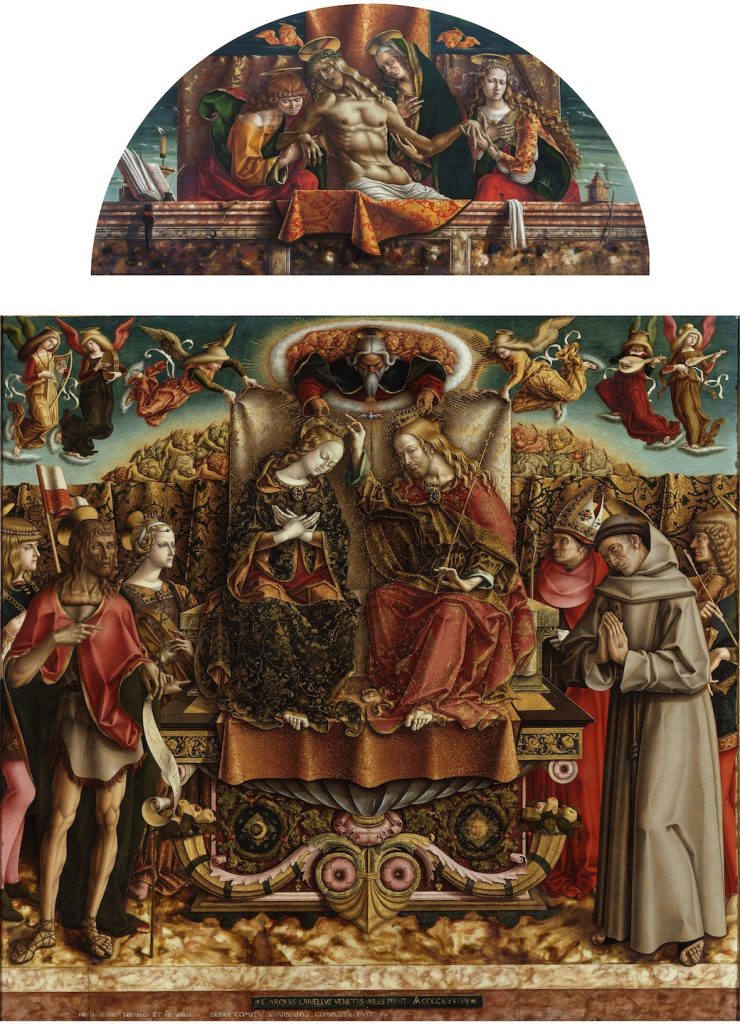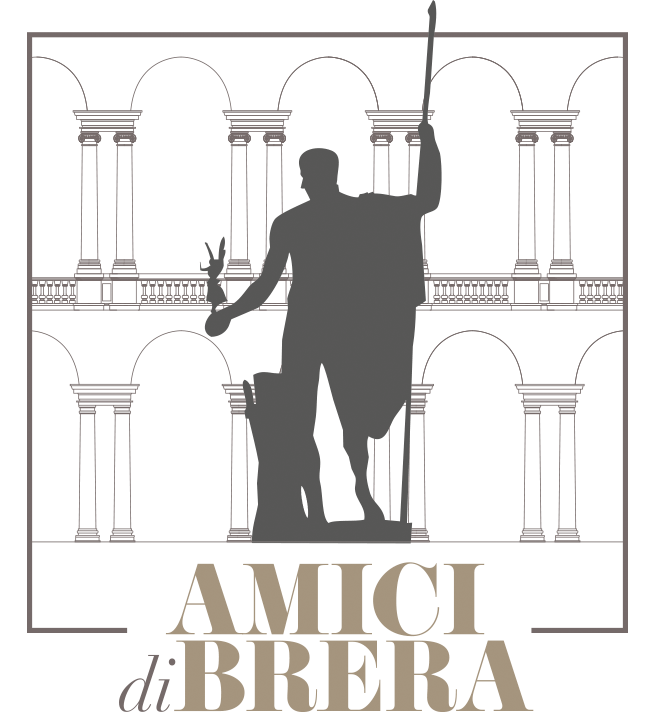CARLO CRIVELLI
(Venezia, 1430? – Ascoli Piceno, 1495)
Coronation of the Virgin with the Trinity and Saints
1493
oil and tempera on panel
Pietà 128×225 cm – Coronation of the Virgin 225×225 cm

PAINTING
The Coronation of the Virgin with the Trinity and Saints, signed CAROLVS CRIVELLVS VENETVS MILES PINXIT MCCCCLXXXXIII, is the last work by Carlo Crivelli, a painter of Venetian origin who worked in the Marche region. Originally located in the church of San Francesco in Fabriano, it arrived in Brera together with the cymatium, depicting a Pietà, in 1855. Both panels were probably part of a larger set whose furnishings were dispersed on the antiques market when the Marche church was demolished in 1780.
The notarial document commissioning the work from the painter Carlo Crivelli, who had moved to the Marche region, is still preserved today: during the two years allocated for the work, for which he was paid 250 ducats, the artist would have received free accommodation, wheat, wine and firewood, provided to him by the friars.
In keeping with his typical style, the scene is crowded and filled with detail, to the point of a descriptive extreme: Jesus crowns Mary, and the two are in turn crowned by God the Father, depicted in foreshortened perspective above their heads, supported by a cloud of gauzy red seraphim, ardent with charity.
BIOGRAPHY
Originally from Venice, Carlo was the older brother of the painter Vittore. He trained in Padua and later worked mainly in the south Marches, becoming the most important artist working in the Adriatic basin, excluding the Venetian lagoon.
He left his native city following the scandal caused by the kidnapping of a sailor’s wife, with whom he had cohabited for a few months until he was arrested, sentenced to six months in prison and fined.
His style lies in the balance: on the one hand are the new perspectives, the expressionist and agitated drawing; on the other is a precious late-Gothic decorative taste with mottled marbles, elaborate fabrics, fruits and animals, and gilded arabesques. The artist chose to isolate himself from the great innovations of the Renaissance that were sweeping the peninsula.
In 1812, the plundering of ecclesiastical institutions under Napoleon brought several works from the Marches to Brera, but it was mainly the English who appreciated Carlo Crivelli’s art, restoring its rightful importance and role.

